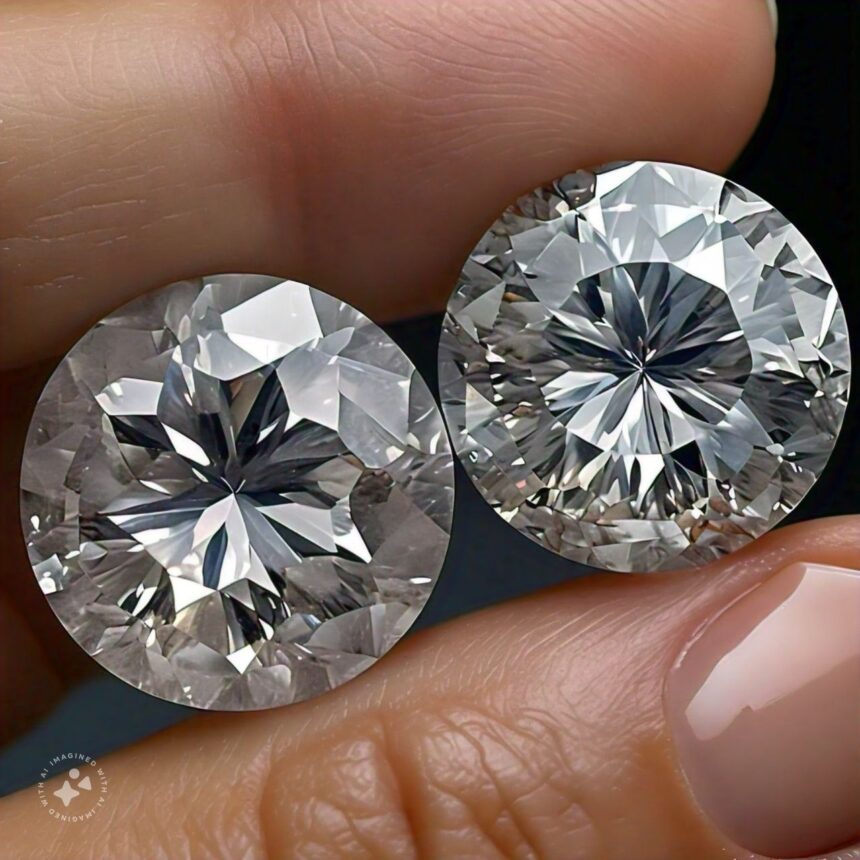Choosing the perfect diamond for a piece of jewelry is often one of the most exciting and meaningful decisions you’ll make. Whether it’s an engagement ring, a necklace, or a pair of elegant earrings, the diamond you choose can symbolize love, commitment, or even personal style. With advances in technology, jewelry lovers now have more options than ever before, including the choice between lab grown diamonds and natural diamonds.
While both types of diamonds are stunning in their own right, each offers unique qualities that appeal to different buyers. In this guide, we’ll explore the key differences between lab grown and natural diamonds, helping you make an informed decision for your next jewelry purchase.
The Basics: What Are Lab Grown and Natural Diamonds?
Before diving into the details, let’s define exactly what lab grown diamonds and natural diamonds are and how they differ.
Lab Grown Diamonds
Lab grown diamonds, as the name suggests, are created in a laboratory using advanced technology that replicates the natural diamond formation process. These diamonds are made from carbon atoms arranged in a crystal structure, just like their natural counterparts. The two main methods for creating lab grown diamonds are:
- High Pressure High Temperature (HPHT): This method mimics the extreme heat and pressure found deep within the Earth’s mantle, where natural diamonds form.
- Chemical Vapor Deposition (CVD): In this method, a carbon-rich gas is used to deposit layers of carbon onto a diamond seed, gradually building up a crystal structure.
The result is a diamond that is chemically, physically, and optically identical to a natural diamond, but created in a matter of weeks or months rather than over billions of years.
Natural Diamonds
Natural diamonds are formed deep within the Earth over billions of years under intense heat and pressure. They are then brought to the surface through volcanic activity and mined from the Earth. Each natural diamond is unique, shaped by its environment, and no two natural diamonds are exactly the same.
Because they take so long to form, natural diamonds are often considered rare and valuable, making them a popular choice for special occasions and heirloom jewelry.
Appearance: Can You Tell the Difference?
One of the most common questions people ask is whether they can tell the difference between lab grown diamonds and natural diamonds just by looking at them. The short answer is no.
Both lab grown and natural diamonds are composed of the same carbon atoms arranged in the same crystal structure, meaning they have identical physical and chemical properties. They share the same hardness (10 on the Mohs scale), brilliance, and optical characteristics. Even trained gemologists require specialized equipment to distinguish between the two.
So, when it comes to appearance, both lab grown and natural diamonds sparkle beautifully. Whether you choose one or the other, your jewelry will look stunning.
Ethical and Environmental Considerations
Another important factor to consider when choosing between lab grown and natural diamonds is their environmental and ethical impact.
Lab Grown Diamonds: A Sustainable Option
Lab grown diamonds are often seen as a more environmentally friendly option because they don’t require mining, which can have significant environmental and social consequences. Mining for natural diamonds involves the removal of large amounts of earth, water, and energy, which can lead to deforestation, habitat destruction, and water pollution.
Lab-grown diamonds, on the other hand, are created in controlled environments, and the production process typically has a smaller carbon footprint. For those concerned about sustainability, lab-grown diamonds, such as Whiteflash 2 carat diamonds, are an appealing choice, offering both ethical sourcing and exceptional quality.
Natural Diamonds: Responsible Sourcing
While natural diamond mining has historically been associated with environmental and ethical issues, the diamond industry has made strides in improving mining practices. Many diamonds today are sourced through ethical channels that ensure responsible mining and fair labor practices. Initiatives like the Kimberley Process aim to prevent the sale of “conflict diamonds” (diamonds mined in war zones and sold to finance conflict) and promote more transparent diamond sourcing.
If you choose a natural diamond, it’s important to ask your jeweler about the origin of the stone and to ensure it comes from an ethical source. At J. F. Kruse Jewelers, you can find both natural and lab grown diamonds that meet the highest standards of quality and ethical sourcing.
Price Comparison: Lab Grown vs. Natural Diamonds
For many buyers, price plays a significant role in the decision-making process. Generally speaking, lab grown diamonds are more affordable than natural diamonds. This price difference is due to the fact that lab grown diamonds can be produced in a controlled environment and don’t involve the complex mining and extraction processes required for natural diamonds.
On average, lab grown diamonds cost 30-40% less than natural diamonds of the same size, clarity, and color. This means that if you’re looking to maximize your budget, you may be able to purchase a larger or higher-quality lab grown diamond for the same price as a smaller or lower-quality natural diamond.
However, natural diamonds tend to hold their value better over time due to their rarity. While both types of diamonds can be stunning, your choice may depend on whether you prioritize budget or long-term value.
Durability and Longevity
Diamonds are known for their incredible hardness, making them one of the most durable gemstones available. Both lab grown diamonds and natural diamonds share the same hardness (10 on the Mohs scale), making them equally durable and suitable for everyday wear, including engagement rings and wedding bands.
Whether you choose a lab grown or natural diamond, you can expect it to last a lifetime with proper care.
Appraisals and Insurance Considerations
Once you’ve chosen your diamond, whether lab grown or natural, it’s crucial to obtain an appraisal for your jewelry. An appraisal provides a detailed description of the diamond, including its cut, color, clarity, carat weight, and overall quality. This documentation is essential for insurance purposes, ensuring that you’re properly covered in case of loss, theft, or damage.
It’s important to note that lab grown diamonds and natural diamonds may be appraised differently due to their market value. While both types of diamonds can be insured, natural diamonds typically hold their value better over time, whereas lab grown diamonds may depreciate more quickly. For this reason, your appraisal will reflect the current market value of the diamond you choose.
Working with a jeweler like J. F. Kruse Jewelers ensures that your appraisal is accurate, detailed, and tailored to the specific diamond you’ve purchased, whether it’s lab grown or natural.
The Emotional Connection
While lab grown diamonds offer affordability and ethical advantages, some people still feel a deep emotional connection to natural diamonds. Knowing that a natural diamond was formed billions of years ago deep within the Earth can make the stone feel more meaningful, especially for engagement rings or family heirlooms.
On the other hand, lab grown diamonds can also carry sentimental value, especially for those who appreciate modern technology, sustainability, or innovative design. Ultimately, the emotional significance of a diamond comes from the story you attach to it, whether it’s lab grown or natural.
Conclusion: Which Diamond Is Right for You?
The decision between lab grown diamonds and natural diamonds is a personal one, and both offer unique benefits depending on your priorities. If you’re looking for a more affordable and environmentally friendly option, lab grown diamonds provide an excellent choice without sacrificing beauty or quality. On the other hand, if you value the rarity and long-term value of a stone that’s formed naturally over billions of years, natural diamonds are the way to go.
No matter which type of diamond you choose, J. F. Kruse Jewelers offers a wide selection of both lab grown and natural diamonds, ensuring you find the perfect stone for your next piece of jewelry. Whether it’s for an engagement ring, anniversary gift, or custom creation, both options can deliver timeless beauty and brilliance.


